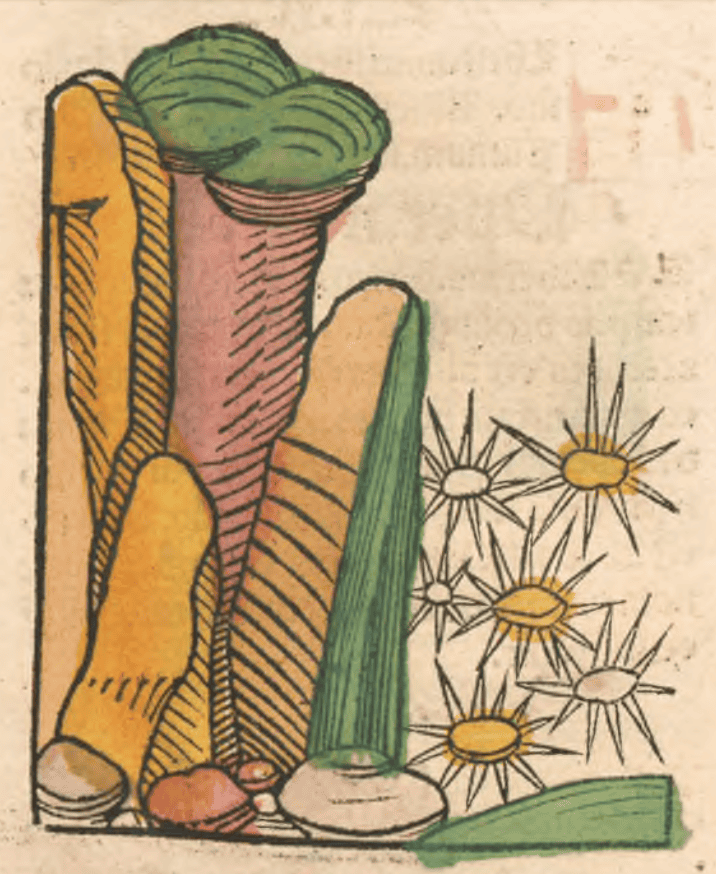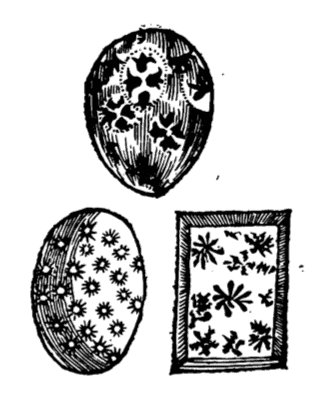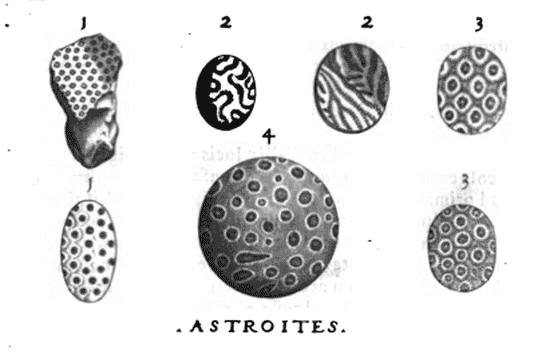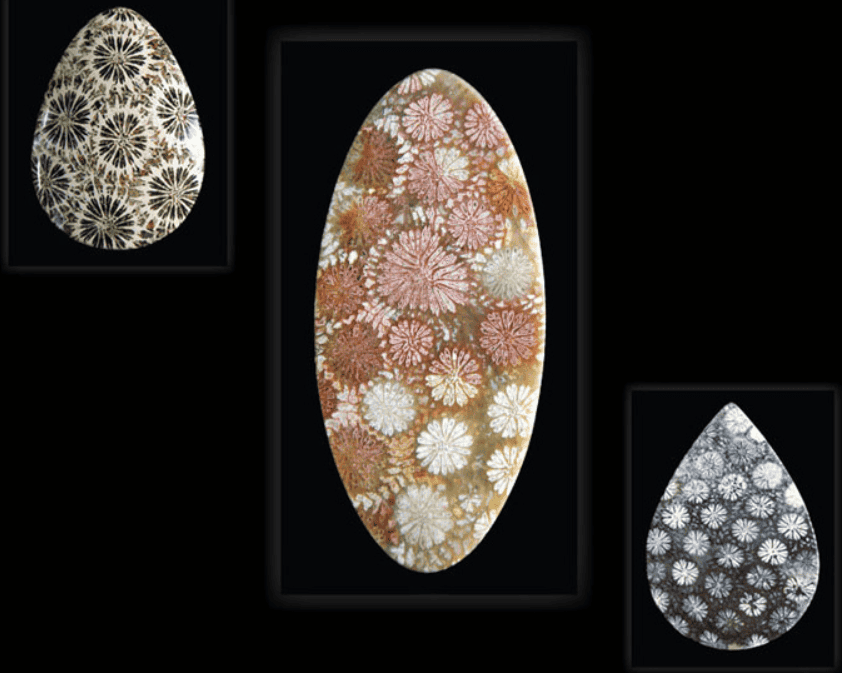Astroites, Star Stone
Witch StonesAstrion, Asterites, Astroites, Astrochites, Astroitis (Star stone), Lapis Stellae magis (stone of many stars), Stellaris lapis, Stellæ lapis, Lapis Stellatus (starry stone), Astroitis verum (True star stone), Stellaria Astroitidis (Star star)
These stones are fossilized limestone skeleton of ancient motherpores or marine polyperos (colonial Corals)
 Hortus sanitatis, 1491
Hortus sanitatis, 1491 Museum Wormianum, 1655
Museum Wormianum, 1655 Metallotheca Vaticana, Mercati, 1719
Metallotheca Vaticana, Mercati, 1719 Examples of Fossil Corals used as ‘Star Stones’
Examples of Fossil Corals used as ‘Star Stones’Photo by Irwan Holmes
Salmon, Seplasium:
|
It is called Asterios Lithos, Astroites, Asteria, Astrites, and Star Stone. It is a dark stone of a whitish color, full of stars or Roses, sometimes like waves of water. Boetius thought it to be a type of Agate. There are 3 main types: 1. Round, without any stars in it; 2. Round, and full of stars; 3. The third has diverse stars longitudinally and may be separated by hand or instrument. They can be very large, but are often no broader than a finger nail. Salmon said the Toad Stone was a species of Star Stone. |
They were sold for 10 shillings a piece in Salmon’s day (17th century) and were often set in rings of Gold. Star Stone powdered finely and given in doses of 4–6 grains was accounted excellent for the Plague, to expel Worms, and for Vertigo and Apoplexy. It was also commended for Melancholy, and to strengthen the principle parts (Brain, Heart and Liver). It is highly alkaline so counters excess acidity in the body. It was called Witch Stone as it was believed to protect from the Spells of Witches. |
